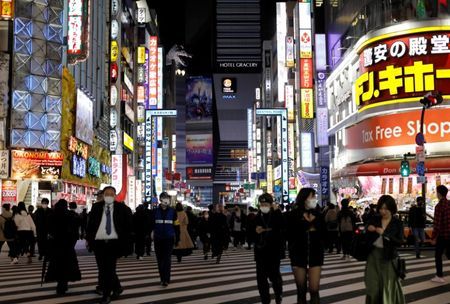TOKYO: The popular scramble intersection in Tokyo’s downtown Shibuya district looks uncrowded, but eateries and pubs on backstreets are busy. Meanwhile, narrow suburban shopping streets are jammed on weekends, with families strolling and heading to lunch. Some bars and restaurants are open past a requested 8 p.m. closing time.
While Tokyo is still under a coronavirus state of emergency, the pandemic is pitting those willing to follow requests for self-restraint against a sizable minority resisting the calls to stay home.
With signs of the infections slowing, Japanese Prime Minister Shinzo Abe lifted the state of emergency in all but eight of the 47 Japanese prefectures on May 14, two weeks ahead of schedule. Restrictions are still in place in Tokyo, Osaka, Kyoto, Hokkaido and four other prefectures where experts say risks remain.
But as stores begin to reopen, people are more apt to shrug off the stay-at-home request.
The state of emergency gives local leaders the legal bases to request social distancing measures but does not impose penalties. Abe has ensured that Japan does not adopt European-style hard lockdowns that would paralyze the economy. While there are growing calls for business restarts, some worry that hasty reopenings will invite a resurgence in infections.
Abe said he’ll have a meeting with experts this week to decide if the state of emergency can be lifted in the remaining areas.
Most restaurants and pubs still can operate, though with shorter hours, and grocery, convenience stores and public transport remain open as usual. There are few incentives to close shops.
Tokyo Gov Yuriko Koike plans to reopen businesses in three phases once the state of emergency is lifted, starting with the lowest-risk facilities like museums and libraries. In the second phase, theaters will be allowed to reopen and business hours for restaurants and bars will be extended. The final phase will apply to all but cluster-prone facilities such as nightclubs.
Economy Minister Yasutoshi Nishimura warned people against loosening up now, “or new infections will rise back and there is a possibility we won’t able to lift the emergency by end of the month.”
Japan has about 16,300 confirmed cases of the coronavirus, including around 750 deaths.



